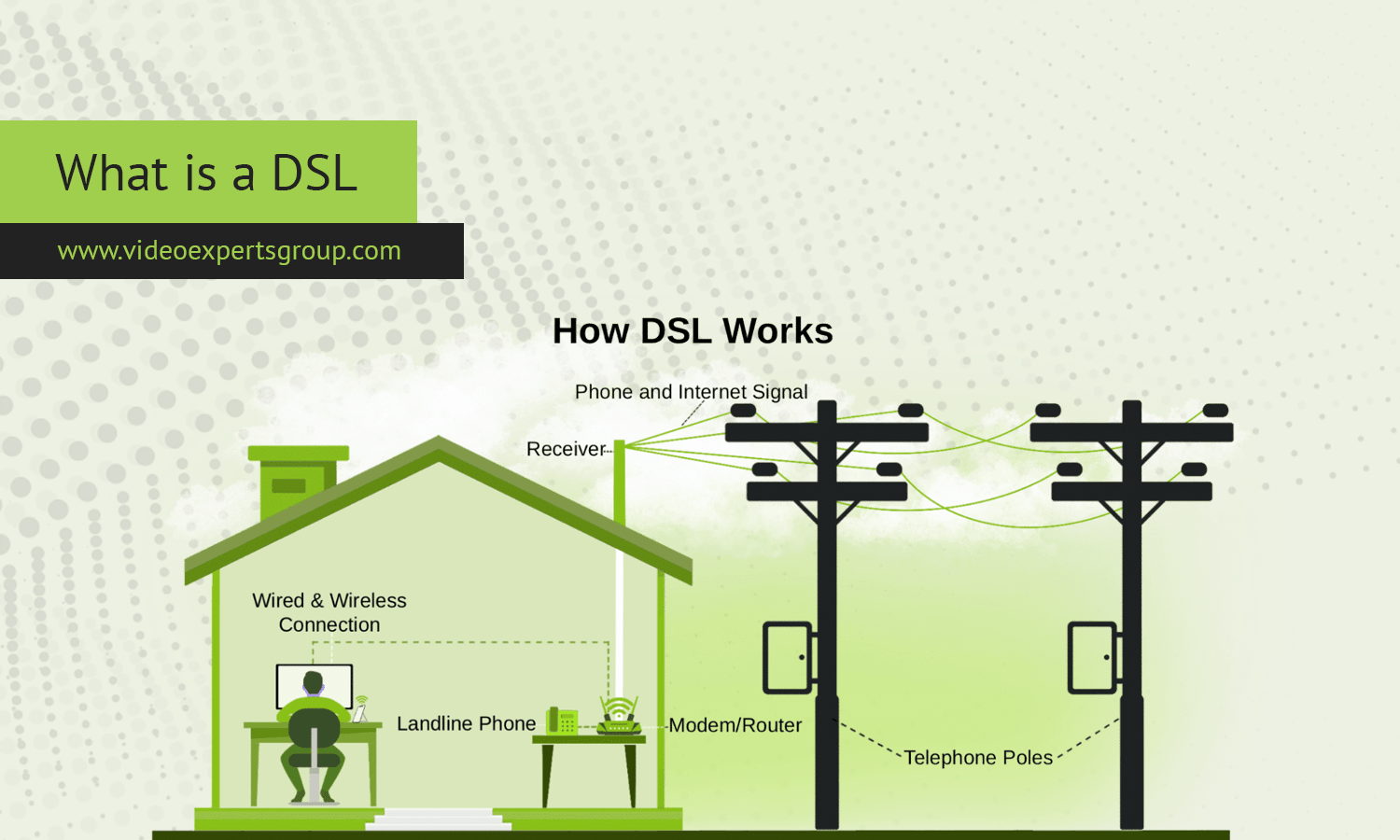DSL (Digital Subscriber Line) is a widely used technology that allows high-speed internet transmission over traditional telephone lines. Developed in the late 20th century, DSL became popular as a cost-effective solution for bringing the internet to homes and businesses without requiring significant infrastructure upgrades. Unlike dial-up connections, DSL can transmit both internet data and phone calls simultaneously, allowing users to browse the internet and use their landline phones at the same time.
Meaning
DSL stands for Digital Subscriber Line. It is a family of technologies that provide internet access by transmitting digital data over the copper wires used in telephone lines. This method capitalizes on the unused frequencies in these lines, allowing for the simultaneous transmission of both voice and data. DSL is considered a broadband connection, meaning it delivers faster speeds than traditional dial-up.
DSL is often categorized as an "always-on" connection, which means the service is constantly available and does not require the user to manually connect each time they want to access the internet. This feature, combined with its availability in many areas, makes it an attractive choice for homes and small businesses.
DSL Technologies
DSL technology encompasses a few variations, each designed for specific use cases or environments. The primary DSL types include:
-
ADSL (Asymmetric Digital Subscriber Line): ADSL is the most common form of DSL for residential use. It offers higher download speeds than upload speeds, which is ideal for activities like streaming, browsing, and downloading content, as users typically consume more data than they upload.
-
SDSL (Symmetric Digital Subscriber Line): In contrast to ADSL, SDSL provides equal download and upload speeds. This is more suitable for business environments where file sharing, video conferencing, or uploading large amounts of data are essential.
-
VDSL (Very High Bitrate Digital Subscriber Line): VDSL offers faster speeds than both ADSL and SDSL, with higher download and upload rates. VDSL is capable of supporting more demanding services, like HD video streaming and online gaming, but is often only available in areas close to the service provider's infrastructure.
-
HDSL (High Bitrate Digital Subscriber Line): HDSL is typically used in business and enterprise settings to deliver high-speed connections over short distances. It is an older form of DSL and is gradually being replaced by faster technologies like VDSL.
How DSL Works
DSL works by transmitting data through the copper wires of a traditional telephone line. The telephone line is divided into different frequency bands, with voice signals occupying the lower frequencies and data transmissions using the higher frequencies. This separation allows DSL to deliver internet access and phone service simultaneously without interference.
Here's a step-by-step breakdown of how DSL works:
-
DSL Modem: To connect to the internet via DSL, users need a DSL modem. This device acts as an intermediary, converting the digital signals from the internet into a format that can travel over the telephone line.
-
Telephone Line: DSL uses the copper wires in your telephone line, taking advantage of the higher frequency ranges that are not used by regular voice calls. This allows data to be sent and received over the same line without interrupting voice communication.
-
DSLAM (Digital Subscriber Line Access Multiplexer): On the service provider's end, the signal from the user's modem is received by a device called a DSLAM. The DSLAM aggregates traffic from multiple users and connects it to the provider's core network, which is linked to the broader internet.
-
Transmission: The digital data is transmitted between the modem and the DSLAM using frequencies not utilized by voice communications, allowing for simultaneous voice and data services.
-
Speed and Distance: One limitation of DSL is that the speed and quality of the connection are dependent on the distance from the user's location to the provider's central office or DSLAM. The further the distance, the slower the speed and the greater the chance of signal degradation.
Pros and Cons
Pros:
-
Widely Available: DSL is available in many areas, especially where traditional phone lines already exist. This makes it accessible to a large population, including rural areas.
-
Affordable: DSL plans are typically more affordable than fiber optic or cable internet, making it a good option for households looking for a budget-friendly internet solution.
-
Dedicated Line: Since DSL uses a dedicated phone line for each subscriber, the connection is not shared with neighbors, which means that speeds are generally consistent throughout the day.
-
Simultaneous Data and Voice: DSL allows for simultaneous internet usage and phone calls without needing two separate lines, which is a significant improvement over old dial-up services.
-
Always-On Connection: DSL provides an "always-on" connection, meaning there's no need to dial in or wait for the connection to establish, making it more convenient than older technologies.
Cons:
-
Distance Limitations: The speed of DSL declines as the distance between the user and the service provider's central office increases. Users located far from the DSLAM may experience significantly slower speeds or may not be able to get DSL at all.
-
Slower Speeds Compared to Other Technologies: DSL, especially older ADSL technology, offers slower speeds compared to newer alternatives like fiber optic or cable internet, particularly for upload speeds. VDSL improves on this, but availability is limited.
-
Limited Availability of Faster DSL: While basic DSL services are widely available, faster versions like VDSL may not be offered in all areas due to infrastructure limitations.
-
Interference and Line Quality: Copper phone lines used by DSL are susceptible to signal interference and degradation over time, particularly if the lines are old or exposed to environmental factors.
DSL is a reliable and cost-effective broadband solution for many users, especially in areas where alternatives like fiber or cable are not available. Its ability to work over existing telephone infrastructure makes it widely accessible, although speed limitations and distance constraints may push users to explore newer technologies in the future.
















